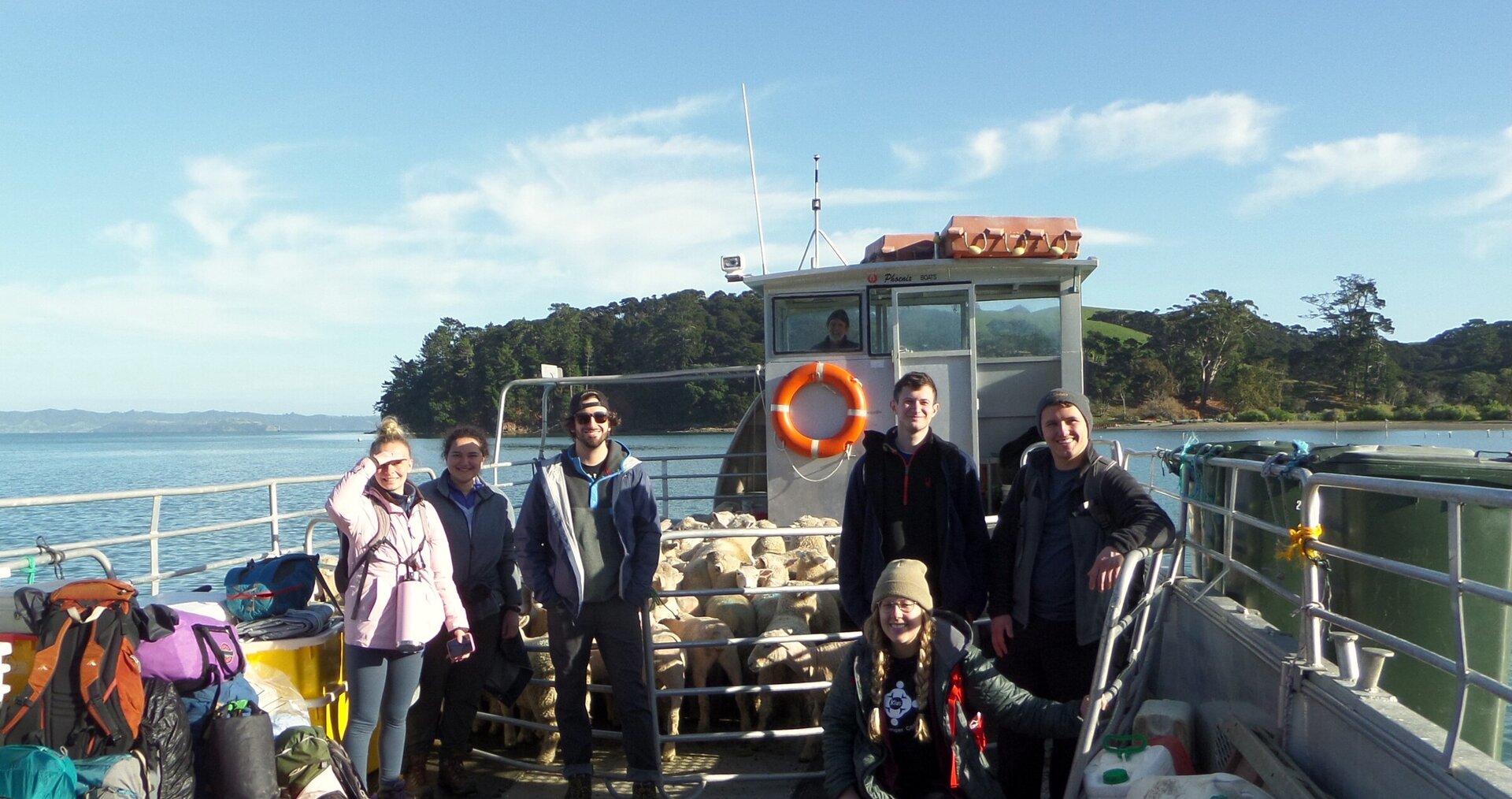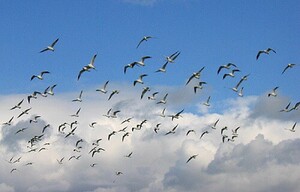Ecology in Action Summer Program
Apply now for Summer '25!
At a conceptual level, many of the issues facing New Zealand are similar to those in the United States and indeed elsewhere in the world. Our coursework is designed with this in mind. Students gain and develop excellent transferable field skills that can be applied in a wide variety of places, to help address a broad spectrum of issues. Learning activities are centred around several core topics, including plant and animal pest management, habitat enhancement, endangered species translocations, ecological monitoring of native flora and fauna, and the role of tangata whenua, the wider community and private landowners in sustainability initiatives. Political frameworks for resource management and sustainability in New Zealand, as well as current policy pathways (climate change, environmental justice) are an integrated part of the curriculum. Students get first-hand experience in how science and policy interact.

Islands
Restoration and conservation on islands has traditionally been a huge part of New Zealand ecology and wildlife management. Islands have served as offshore “arks” where species that were vulnerable to predators could survive. Starting in the 1970s, techniques were developed to eradicate mammalian pests from offshore islands. This, together with translocation of rare and endangered species, has allowed many off-shore islands to become safe-havens for wildlife. Native and endemic plants and animals now thrive on many of the Gulf Islands.
Most islands in the Hauraki Gulf have a long history of human occupation. The islands were among some of the first areas settled by Māori. Many of the Gulf islands were highly sought after, and were taken over by Europeans once they arrived in New Zealand. Both Māori and Europeans used the islands extensively for food production.
In the Hauraki Gulf, mammalian pests have been eradicated from a number of islands in recent years. EcoQuest contributes to ecological restoration and research efforts on several of these islands. We incorporate several islands as exciting options in the summer program. Tiritiri Matangi Island and Ponui Island have been part of our summer programs since 1999.
Program Field Sites
Due to long-standing and successful involvement with a number of partners, including the Department of Conservation, the Auckland Council, private land owners and several island restoration trusts, EcoQuest is able to offer students the opportunity to experience and contribute to a significant part of the spectrum of restoration opportunities on offshore islands in the Hauraki Gulf, New Zealand's largest marine embayment.
On these islands, students may participate in revegetation programs, or in long-term ecological monitoring programs designed to assess the response of native plants and animals to the restoration processes (which typically include eradication of mammalian pests, weed management, native revegetation, and translocation of endangered species).


Ponui Island
Ponui Island is the eastern-most of the Inner Hauraki Gulf Islands and is privately owned. The island has been farmed for more than a century, but a large tract of broadleaf/kauri forest remains. Following successful establishment of North Island brown kiwi in the 1960's, Ponui now supports the most dense wild population of this species of kiwi in New Zealand. Students learn about the ecology of kiwi and carry out kiwi call surveys. They explore in-depth the role that private landowners can play in maintaining biodiversity, the provisions for supporting landowners to do this successfully, and the resource management issues that may help or hinder in this process. Research on several aspects of ecology of kiwi is carried out by Massey University graduate students, under supervision of Dr. Isabel Castro (lecturer in ecology at Massey), one of the EcoQuest research associates.
Tiritiri Matangi
Tiritiri Matangi (Tiri) is considered one of the most successful ecological restoration projects in the world. There is evidence of extensive Maori settlement on Tiri. The two main tribes that occupied Tiri at different times were Kawerau and Ngati Paoa (our local iwi at Whakatiwai). Māori occupation of Tiri ended in the late 1850’s, and already at that time Europeans were farming sheep and pigs on the island. Tiri fell into Crown ownership in the early 1940’s. 120 years of farming saw this 220-hectare island stripped of all but about 5% of the remaining native coastal broadleaf forest. An initiative by faculty from Auckland University in 1979 saw the development of a proposal to develop / use Tiri as habitat for endangered flora and fauna. The Department of Conservation, together with many volunteers from the wider Auckland community, have eradicated all introduced mammalian pests, planted the island with native species, and reintroduced native wildlife. Following more than 25 years of restoration efforts, the island provides a safe haven for many threatened species and serves as one of the best examples of what parts of New Zealand were like before the introduction of mammalian predators and competitors. On Tiri, students experience first-hand a highly successful restoration project and we explore the role of this island in education for sustainability.
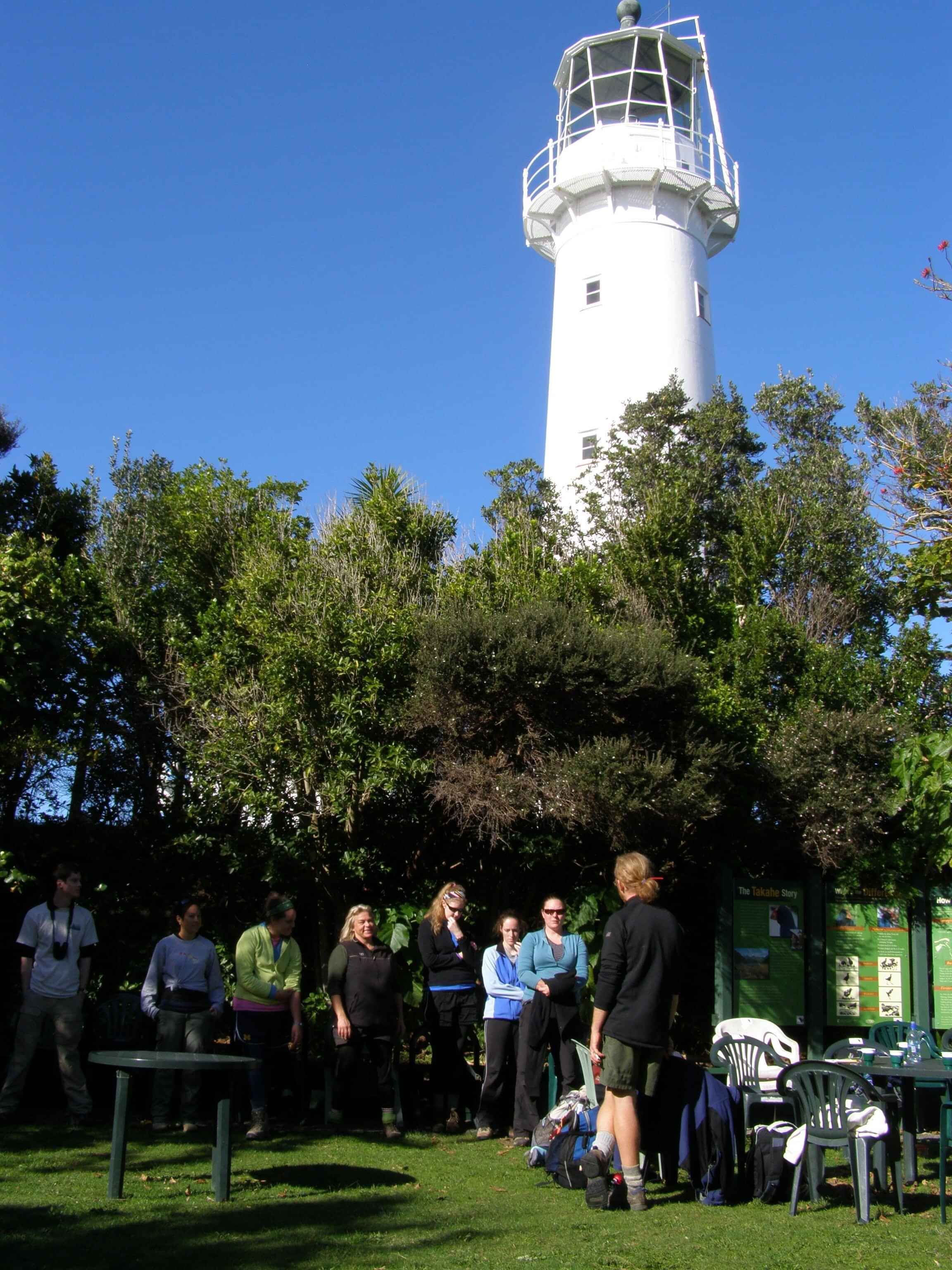
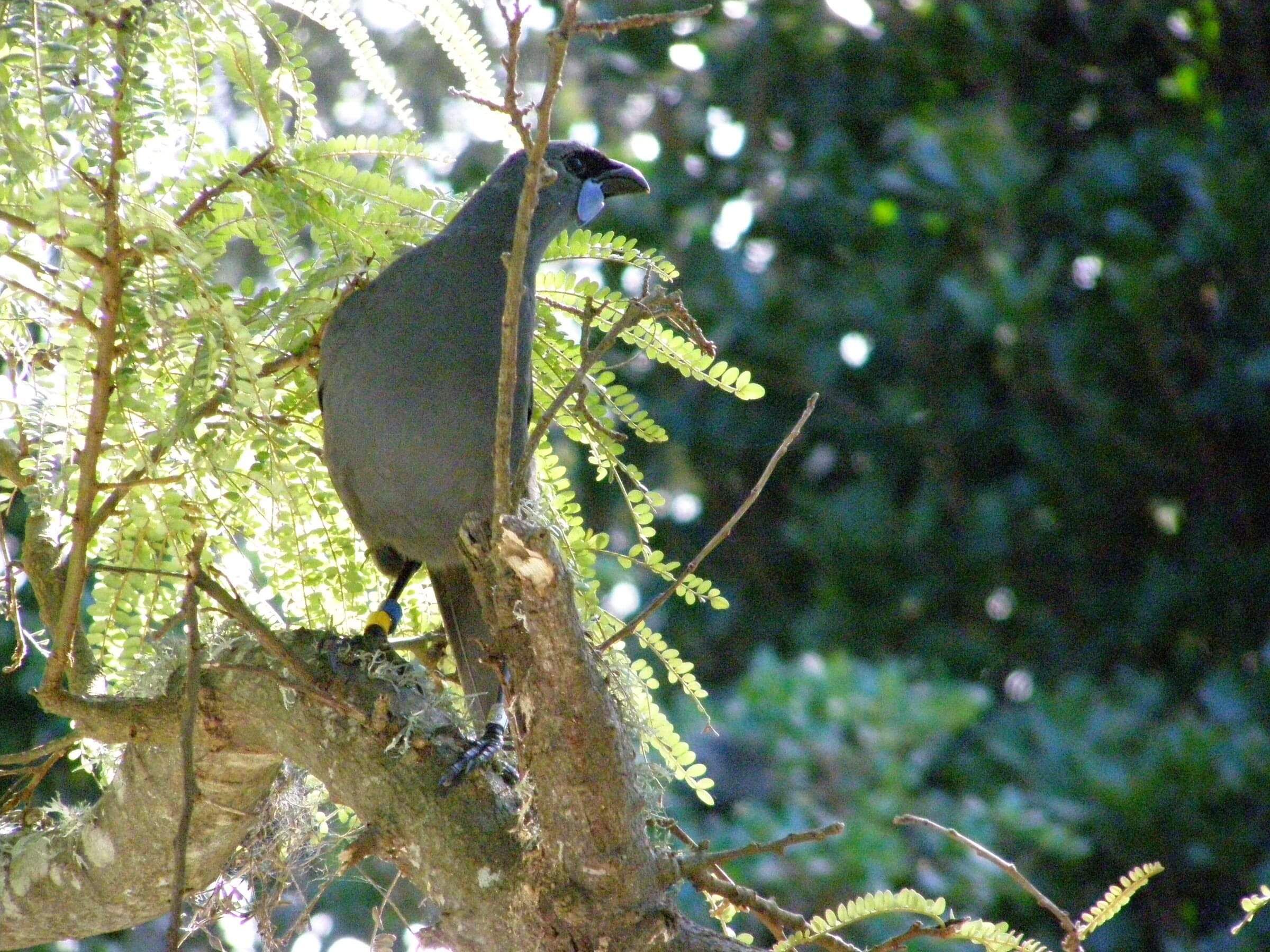
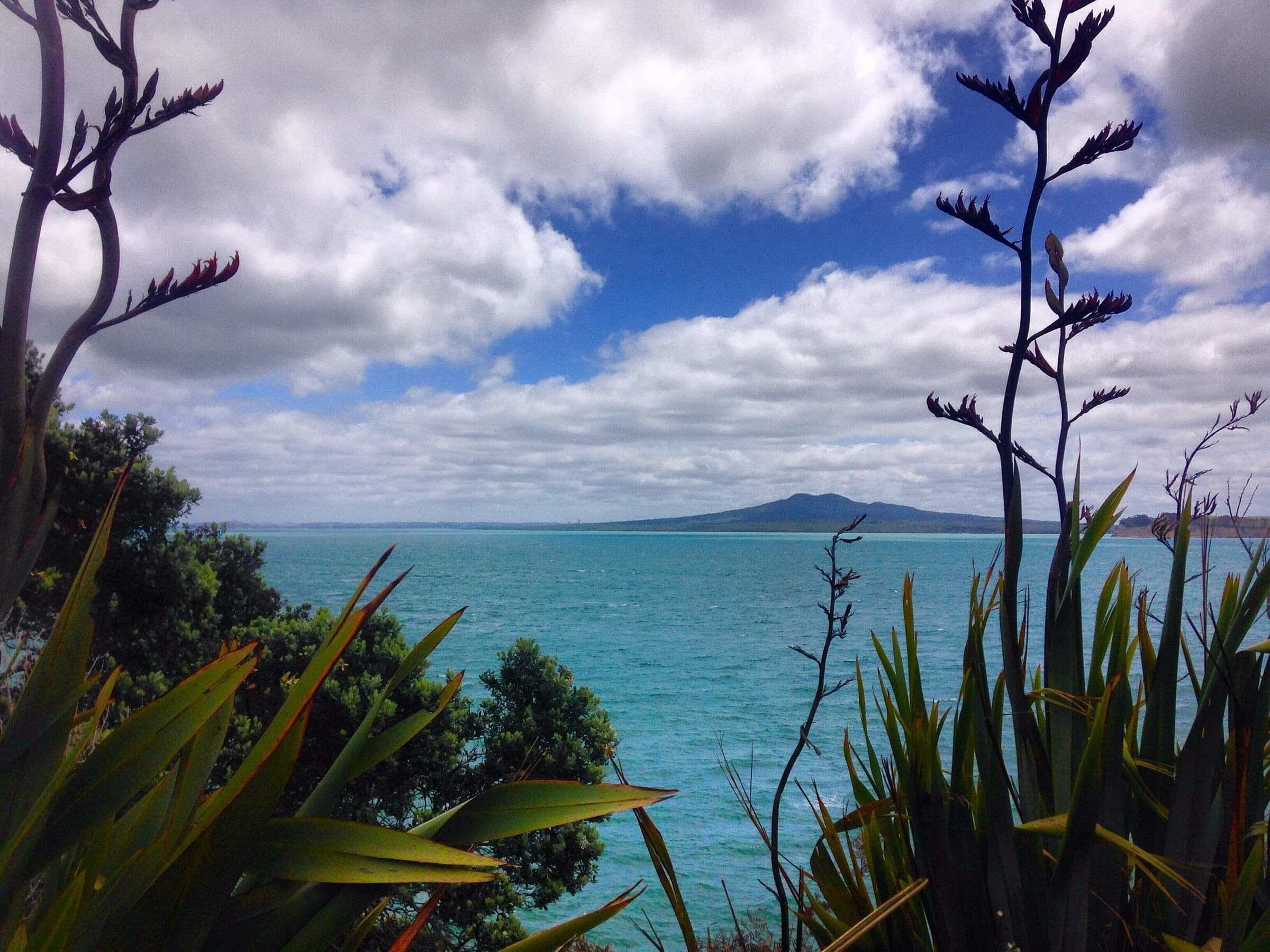
Rangitoto Island
Rangitoto Island is a basalt cone formed by the most recent eruption of Auckland’s volcanic field (600 year ago). This gives it not only its distinctive shape, but its status as “one of the newest bits of New Zealand”. The ecology and current forest type on Rangitoto reflects the fact that it was quite recently (and still is, in places) bare volcanic rock (both lava flows and scoria). The succession process on Rangitoto is extremely unusual, since one of the first colonising species was pohutukawa. Pohutukawa are unusual early-successional species that grow into large, long-lived trees, which form a closed forest canopy. Rangitoto Island is currently managed by the Department of Conservation as a Scenic Reserve. Students visit Rangitoto when they stay on Motutapu.On these islands, students may participate in revegetation programs, or in long-term ecological monitoring programs designed to assess the response of native plants and animals to the restoration processes (which typically include eradication of mammalian pests, weed management, native revegetation, and translocation of endangered species).
Sanctuary Mountain Maungatautari
Maungatautari is the sacred mountain of the Ngāti Koroki Kahukura and Ngāti Hauā iwi. It is an ancient volcanic peak, the upper slopes of which are covered in indigenous forest. The mountain is surrounded by farmland. In 2001 Maungatautari Ecological Island Trust (MEIT) was formed when the community, including landowners, local iwi and residents came together with an aim to restore and protect this precious ecosystem (https://www.sanctuarymountain.co.nz ).
EcoQuest has a long history with this exciting sanctuary, right to the inception of the concept of Maungatuatari becoming the largest pest-free forested area (3,400ha) on the New Zealand mainland. The forest on the mountain is fenced off from mammalian pests and predators, with 47km of XcluderTM pest-proof fence. Following the completion of the fence, eradication of mammalian predators and competitors inside the fence was carried out in 2006. The native forest and its native and endemic species are flourishing, and a number of threatened species have been reintroduced to the mountain, which is like an island of forest, in a sea of farmland: a mainland island.
During this field trip we stay at Pohara Marae, we learn about and explore the forest ecosystem and we visit the nearby predator-free Warrenheip Reserve where the XcluderTM Fence was developed.


Field Centre
The Ecology in Action program is based at our Field Centre on the western shore of Tikapa Moana the Firth of Thames, in the small rural coastal settlement of Whakatīwai (one hour southeast of Auckland), in the rohe (tribal territory) of Ngāti Paoa & Ngāti Whanaunga, just 300 metres south of the Wharekawa Marae.
The field centre is bordered by the Whakatīwai stream to the north, and the Hūnua ranges form the backdrop to the west. We look east across the Firth, a shallow marine embayment, to the rugged hills of the Coromandel Peninsula
The home base for the South Island SAFSA program is in Golden Bay at The Sandcastle in Pohara, in the rohe of Ngāti Tama, Ngāti Rārua and Te Ātiawa and close to Onetahua marae. From here it is just a 500m walk to the sandy beach of Te Tai-o-Aorere Tasman Bay.
EcoQuest has established a vibrant sustainable learning community. Since programs are residential, students and some staff live on site.
Student accommodation is in cabins with 2-3 students per cabin and there are shared bathroom facilities. A separate house provides a student lounge and several rooms for study spaces. The wharekai (literally the eating house) is our main communal building which doubles as a classroom and dining room. This building is situated to make the most of the open space and sun, and students often spend time outside on the large deck. The gardens provide lots of room for play, lounging in hammocks, and for growing vegetables and fruit. There is on-site accommodation for some staff and visiting faculty.
The field centre is a microcosm of decision making, as well as understanding and modelling sustainability. Students are involved in growing food, maintaining the plantings (food for people, food for native species, biodiversity values, amenity values).All chores are shared (e.g. cooking, cleaning, caring for the grounds and equipment).
Students are an active part of a learning community where sustainability is a guiding principle. They are empowered to become catalysts for change and for sustainable living.

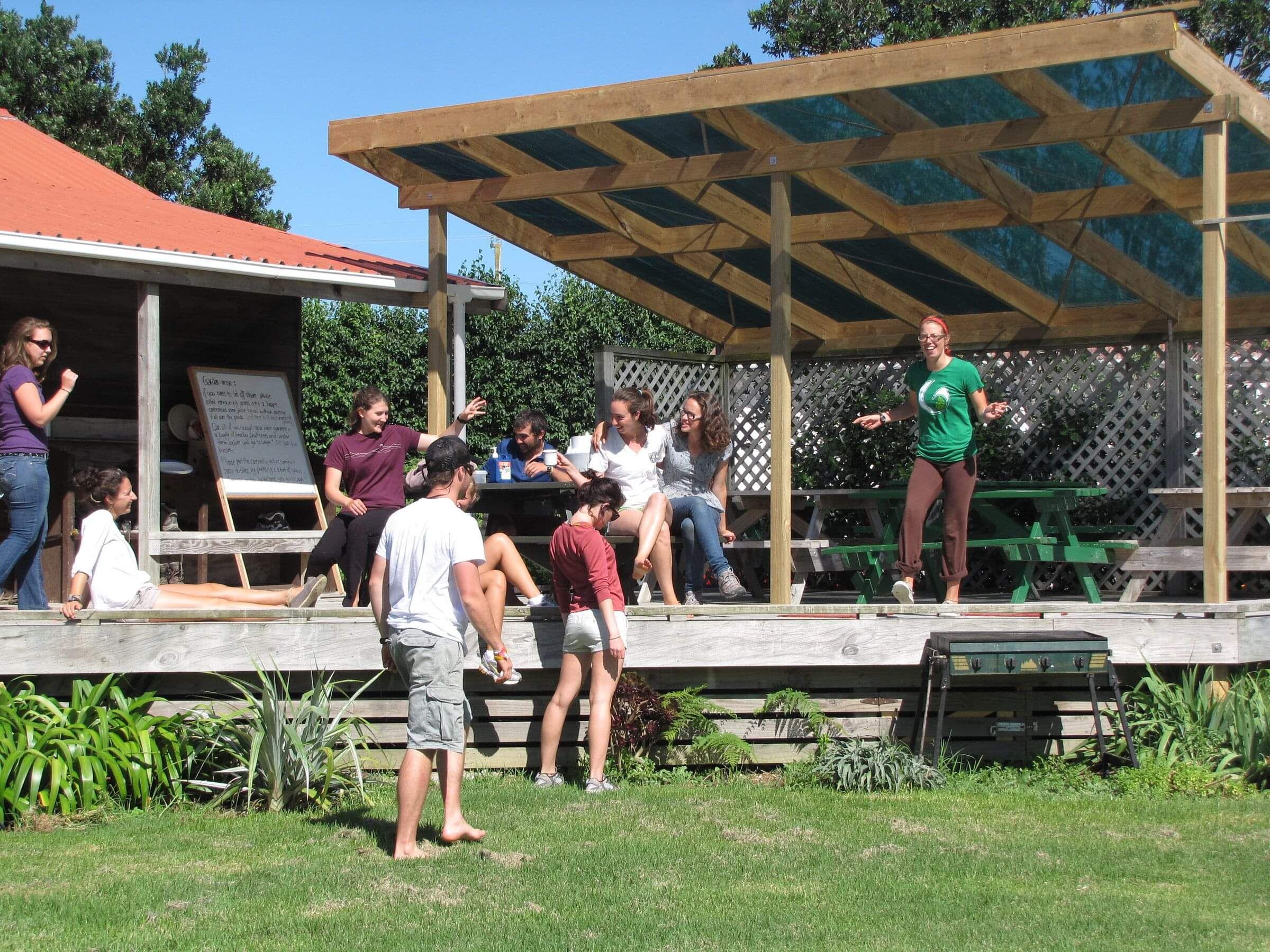
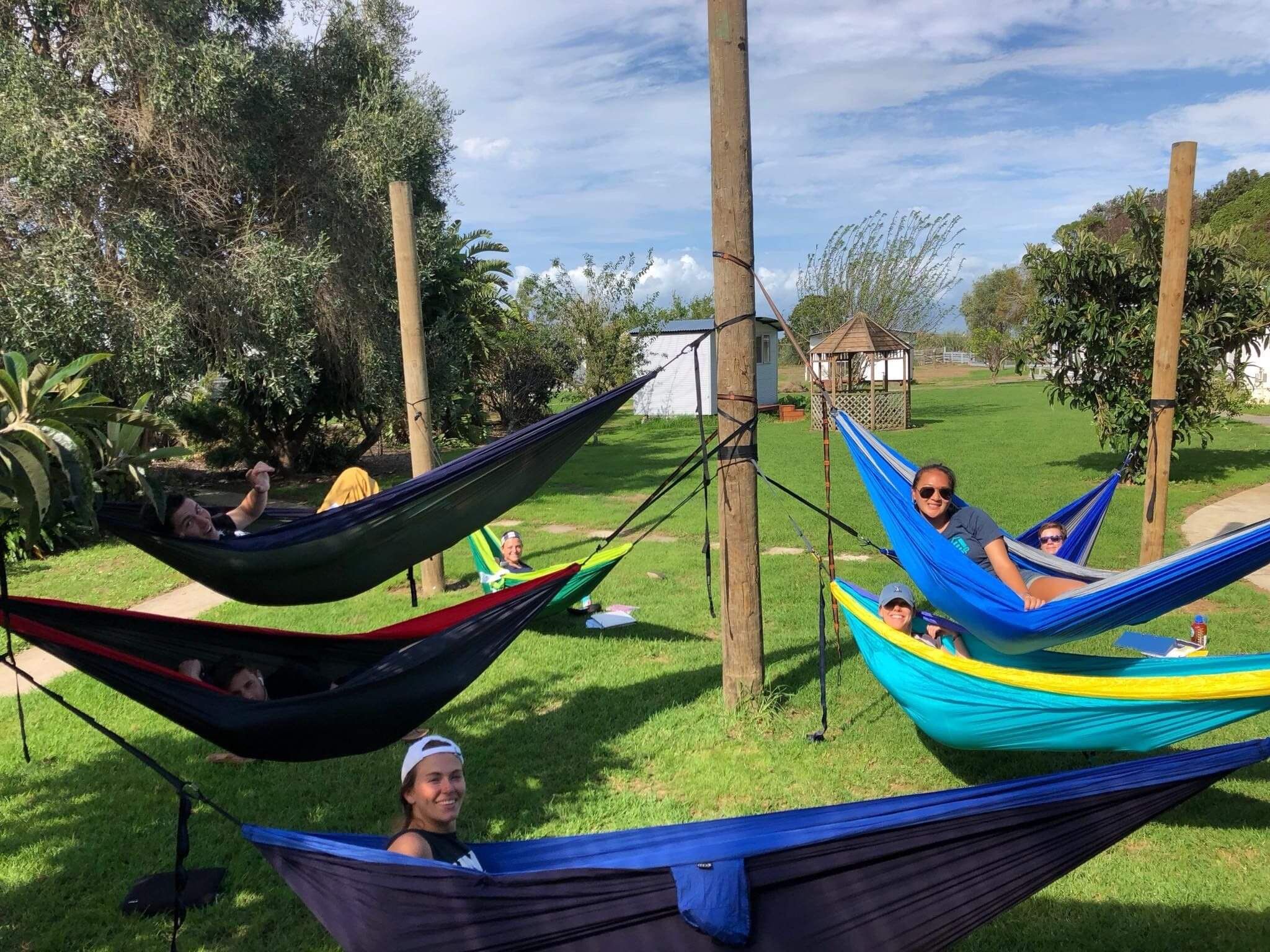
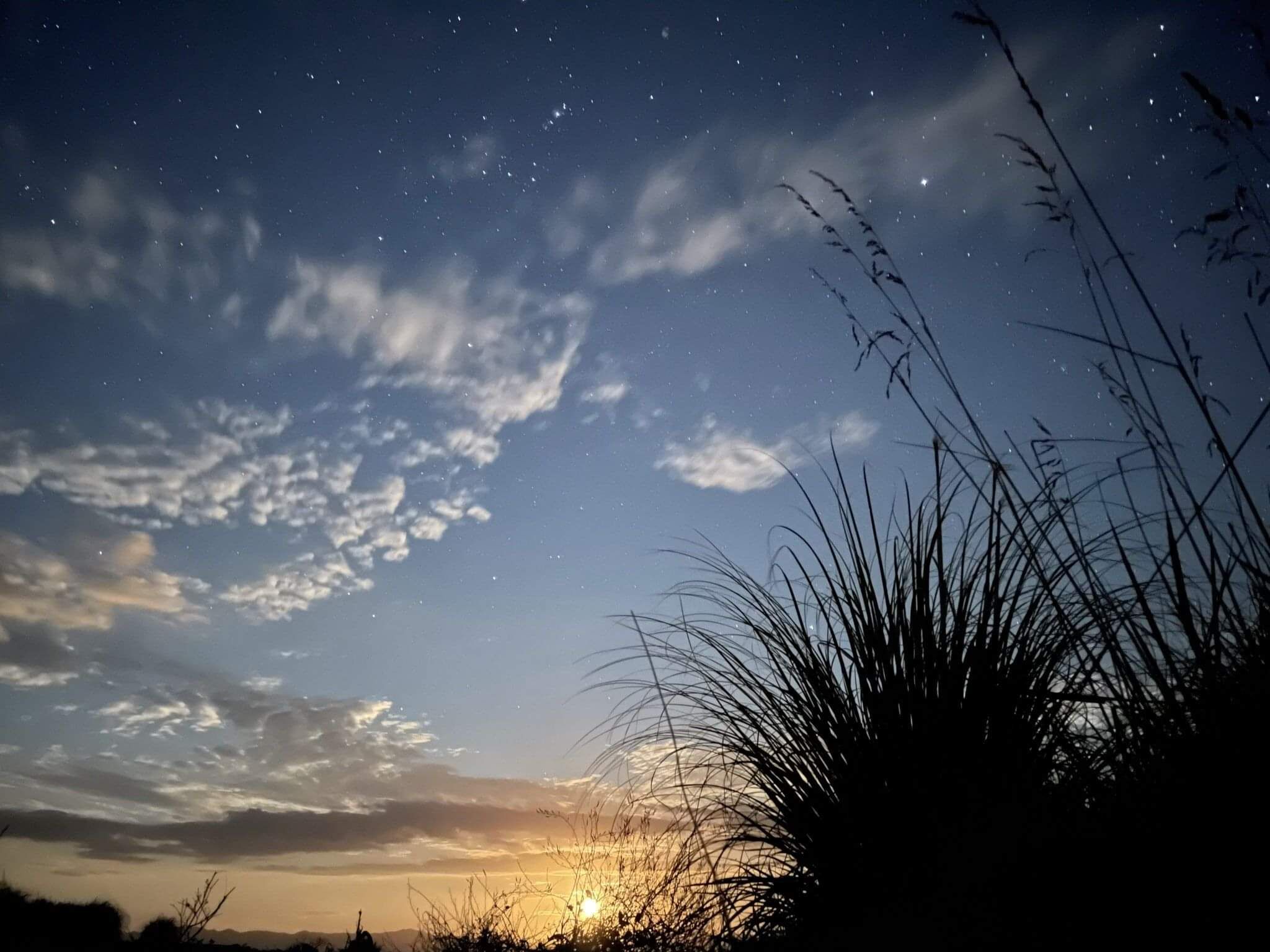
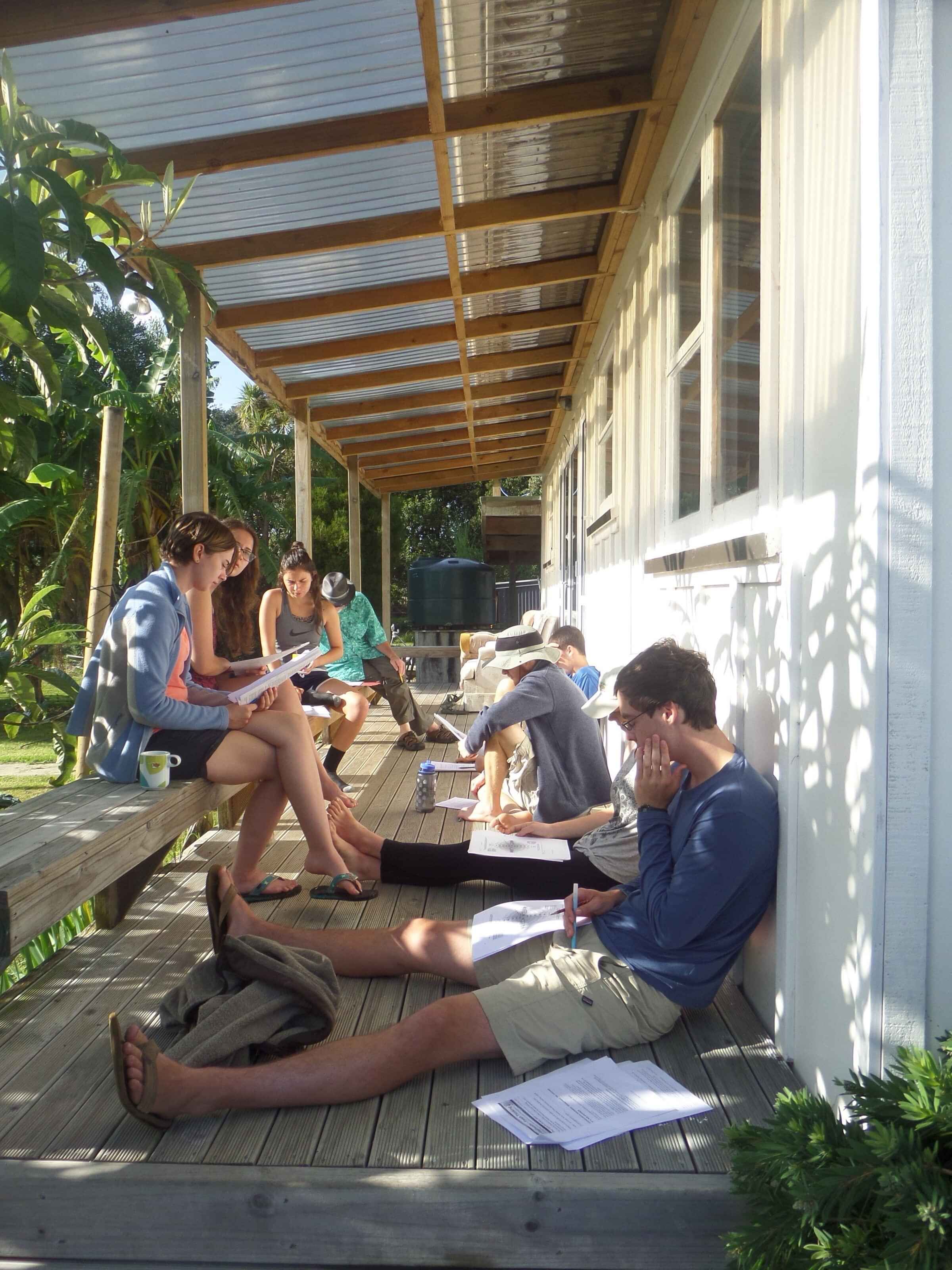
Social Activities
There are many opportunities for social activities, both at and away from the field centre.
The hiking trails in the nearby Hūnua Ranges are popular, and kayaking ranks highly.
At EcoQuest, there is space for volleyball, soccer and Frisbee as well as a climbing wall. It is also just a short bike ride to the local store.
Within three hours of travel from EcoQuest, you will find protected offshore island sanctuaries, varied coastal-marine environments, extensive rural landscapes, wetlands, volcanoes and forested mountains, as well as towns and cities.
During non-program time students often take the opportunity to explore national and regional parks, reserves, beaches, and towns further afield ,and we are only an hour from Hobbiton!
Courses
NR660: Ecology and Biogeography of New Zealand
5 Credit Hours. Permission, Junior Standing. (Coreq: NR661, NR662, NR663)
Course Description
From a bioregional perspective, students learn about the geographical, geological, biological, and human ecological processes that have shaped the distribution of species and biotic communities in present day Aotearoa New Zealand. The course emphasizes interactions and interdependencies among marine, freshwater and terrestrial ecosystems.
Students will
- gain a fundamental understanding of specific attributes of New Zealand’s insular evolutionary history, its diverse landscapes and unique biota, and the impacts of recent human habitations.
- develop field skills (classification, mapping, habitat assessment, field identification, sampling) as they study community ecology of representative ecosystems and the effects of human influences on these systems.
- identify and understand inter-relationships of important taxonomic groups, map and quantify habitats and species-habitat relationships, assess impacts of gradients on patterns of species abundance and distribution, and track the effects of exotic species on native ecosystems.
This course, along with NR661 and NR662, is taught through integrated modules of lectures and field exercises.
Learning outcomes
A basic understanding of representative New Zealand ecosystems and how they function;
- An awareness of the impacts of some human activities on native ecosystems;
- Acquisition of field identification skills (focusing on key species), and learning to apply these in assessment of the relative quality of key habitats;
- A specific understanding of drivers, food webs and life cycles of key ecosystems through case studies: coastal/marine, estuary/saltmarsh, freshwater, native/exotic forest, agricultural, sub-alpine;
- Development of biodiversity awareness and assessment skills;
- Development and application of skills needed to conduct basic research and monitoring, including observational and sampling techniques, and a solid working knowledge of appropriate field practice/procedures.
NR662: Environmental Policy, Planning and Sustainability in New Zealand
3 Credit Hours. Permission, Junior Standing. (Coreq: NR660, NR661, NR 663)
Course Description
In this course, students will assess the impacts of the Resource Management Act (1991) (RMA) on the ecology, economy, and socio-political environment in New Zealand. We examine issues related to the historical exploitation of New Zealand’s resources, indigenous use issues and conflicts, new threats posed by modern society, and the ways in which New Zealand and the world can move toward a sustainable equilibrium between people and nature. We will look at the factors that have historically determined the quality of New Zealand’s natural environments (low human population density, primary producer economy, relatively enlightened social policies, traditional culture, etc.). Speakers may be from industry (business, agriculture, fisheries, forestry, and manufacturing), Department of Conservation (DoC), the Auckland, Waikato and Canterbury Regional Councils, some district councils, Iwi (Māori) representatives and others from diverse economic, social and cultural backgrounds. Resource consent processes at district, regional and national levels will be studied on a case by case basis and appraised in terms of their relative economic and social costs and their effectiveness in settling issues and achieving sustainability. Various New Zealand administrative/political structures such as the Ministry for the Environment, DoC, local authorities, Crown Research Institutes, and Treaty of Waitangi Fisheries Commission will be evaluated for their effectiveness in dealing with key issues, including the philosophical and ethical context related to national and global environmental policy and action. Students will be challenged to consider multi-disciplinary, consensus-building and practical plans of action for the development and maintenance of policies that are, at once, economically, socially and environmentally sustainable.
Learning outcomes
- A basic understanding of how environmental policy is formulated and carried out at different levels of government, and of the principal influences that cause it to change over time;
- Development of the students’ conceptual thinking abilities in appreciating the complex global interrelationships among the multiple forces of the natural world, and the different ways that human cultures and governments deal with these in terms of real and perceived requirements of people and countries;
- Sharpening of abilities to seek out and understand all of the variables and differing points of view that are behind every question of development vs. conservation;
- Understanding different policy stances (comparisons of countries, cultures, economic theories) and what drives them;
- Developing a mind-set of consultation and problem solving based on the use of all available information concerning the target issue;
- An appreciation for the basis of traditional land ownership systems, and concerns by Māori (and other native peoples outside New Zealand) regarding modern approaches to land use.
